Welcome to the vibrant world of color blocking, where your living room can transform from merely functional to fabulously eye-catching! Whether you’re a beginner taking your first steps into the kaleidoscope of interior design or a seasoned decorator seeking fresh inspiration, this guide is your key to unlocking a realm of elegant possibilities. Our “14 Elegant Color Blocking Tips For Living Rooms” promises to inject a burst of creativity into your home, making it a true reflection of your personality and style.
In this guide, you’ll discover practical techniques that not only elevate your space but also enhance its functionality. Each tip is crafted to help you create a harmonious balance of hues, guiding you to make confident choices that resonate with your aesthetic vision. As you explore these ideas, you’ll experience the sheer joy of seeing your living room come to life with dynamic colors that effortlessly flow and complement each other. With our expert guidance, you’ll feel empowered to tackle any design challenge, transforming your space into a masterpiece of modern elegance.
Choose Complementary Color Schemes
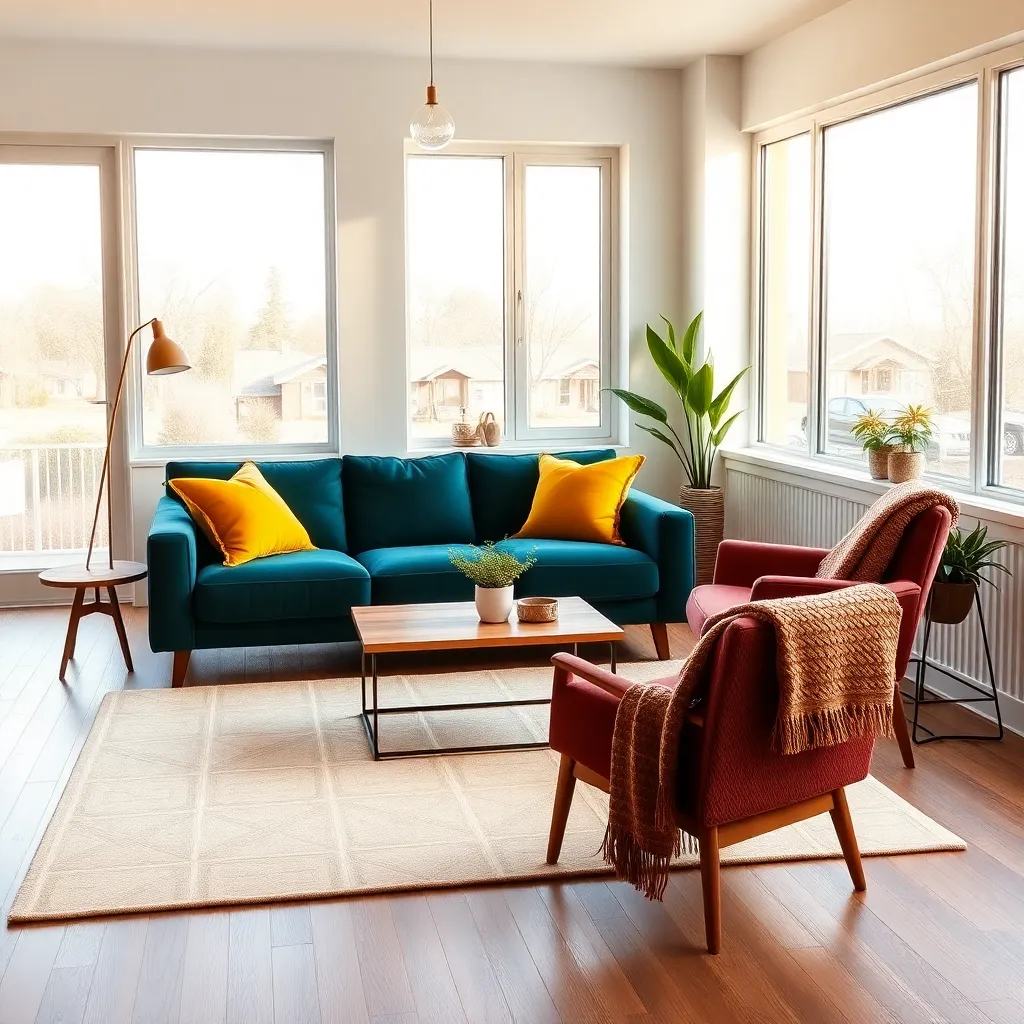
To create a harmonious living room, start with a base color and then select a complementary color that will highlight and enhance your space. Use a color wheel to easily identify complementary colors, such as pairing a soft teal with a warm terracotta, which brings both balance and vibrancy.
When selecting furniture, choose pieces that incorporate your complementary colors subtly, such as a sofa in a neutral shade accented with pillows in your chosen hues. Consider incorporating textures like velvet or linen in your color palette to add depth and interest without overwhelming the room.
For a more advanced approach, layer your complementary colors in varying shades and tones to create a sophisticated color-blocked effect. This can be achieved by painting one wall a deep shade of your base color and using lighter tones of the complementary color in your decor or artwork.
Accessorize with care by selecting items that echo your chosen colors, such as vases, rugs, or curtains, ensuring they tie the room together without clashing. Mix materials like metal or wood in your accessories to add an additional layer of sophistication and texture, keeping the room cohesive yet dynamic.
Balance Bold with Neutral Tones
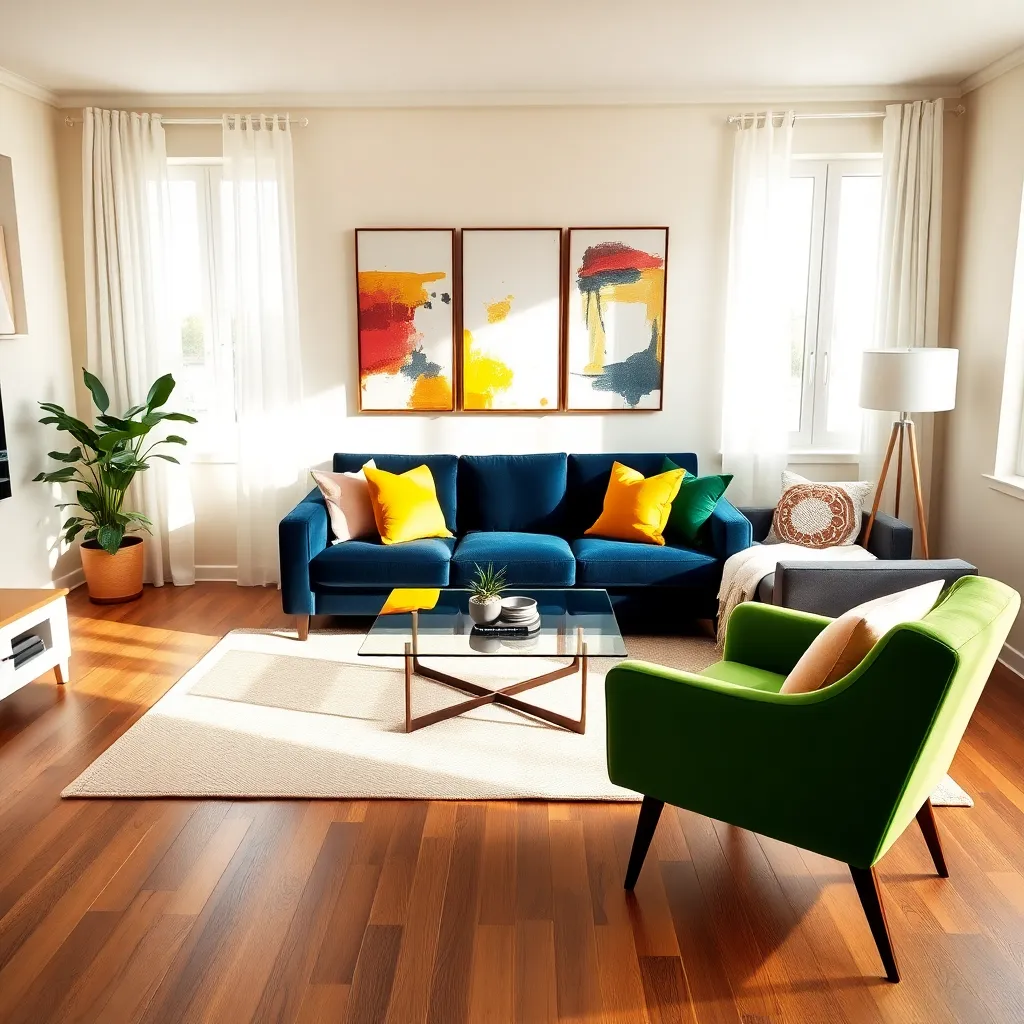
Balancing bold colors with neutral tones is an effective way to bring harmony into your living room. Start by selecting a bold color for a key piece, like a vibrant sofa or an accent wall, and then surround it with neutral tones to create a sense of calm.
Consider using a neutral palette as the foundation of your room. Incorporate shades like beige, gray, or white in your walls, floors, or larger furniture pieces to create a cohesive background that highlights your bold elements.
For those who prefer a rich color experience, adding neutral accessories like cushions or rugs can help tie the room together. These elements can soften the impact of bold hues, ensuring the space feels welcoming rather than overwhelming.
Advanced decorators can experiment with textures to further balance bold and neutral tones. Use materials like leather, linen, or wood to add depth and interest, allowing your bold colors to stand out while still maintaining a sophisticated look.
Create Focal Points with Color
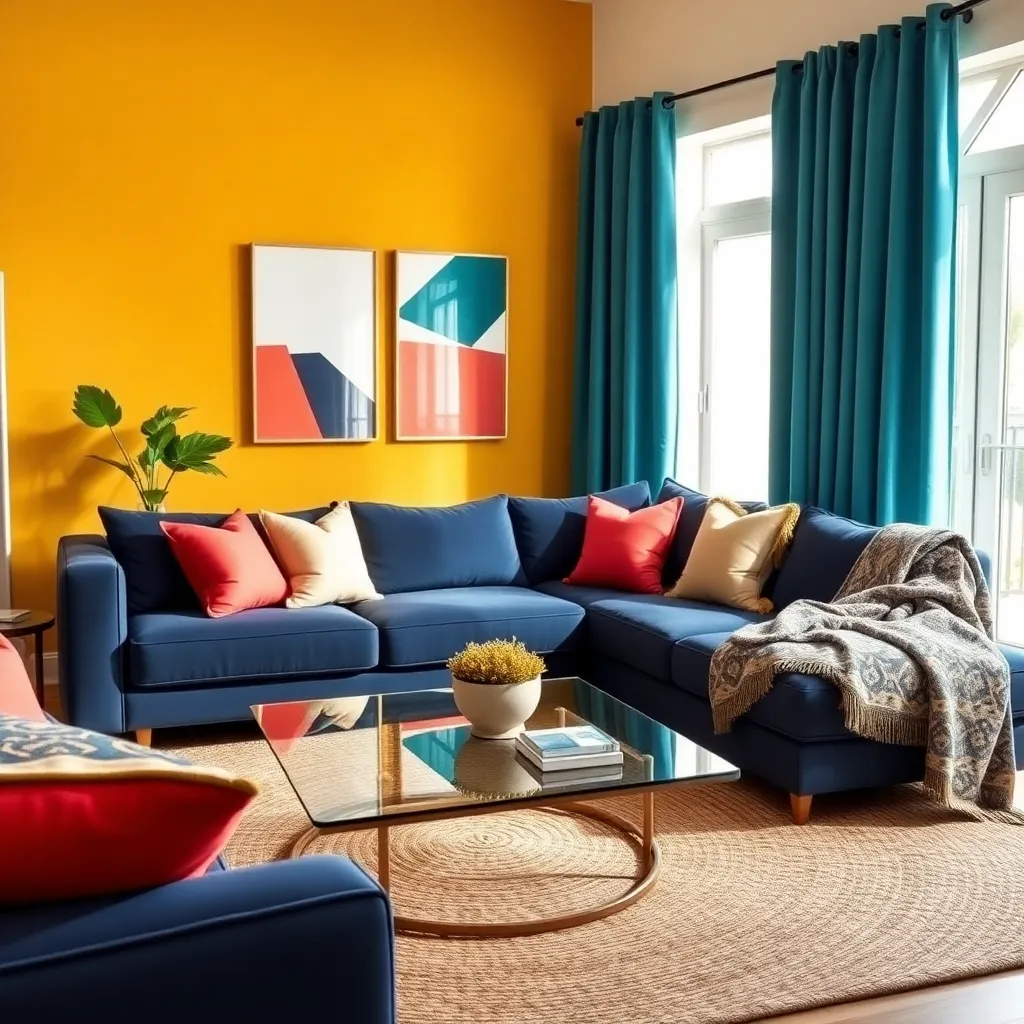
To create a focal point in your living room using color, begin by selecting a wall to paint in a bold, contrasting hue that stands out from the rest of the room. This technique not only draws the eye but also adds depth and dimension to your space.
Consider using furniture or decor accents in complementary colors to enhance the focal wall. For example, if your wall is a rich navy blue, opt for a mustard yellow or soft coral in your cushions or throws to create a cohesive yet striking look.
Layering textures with your chosen color can further emphasize the focal area. You might introduce a velvet sofa or a patterned rug in shades that echo the wall color, adding both visual interest and tactile appeal.
Advanced decorators can experiment with color zoning, which involves painting different sections of the room in varying shades to guide the flow and function of the space. This method can delineate areas such as reading nooks or dining zones within a larger room, using color as a subtle yet effective boundary.
Use Rugs for Color Segmentation
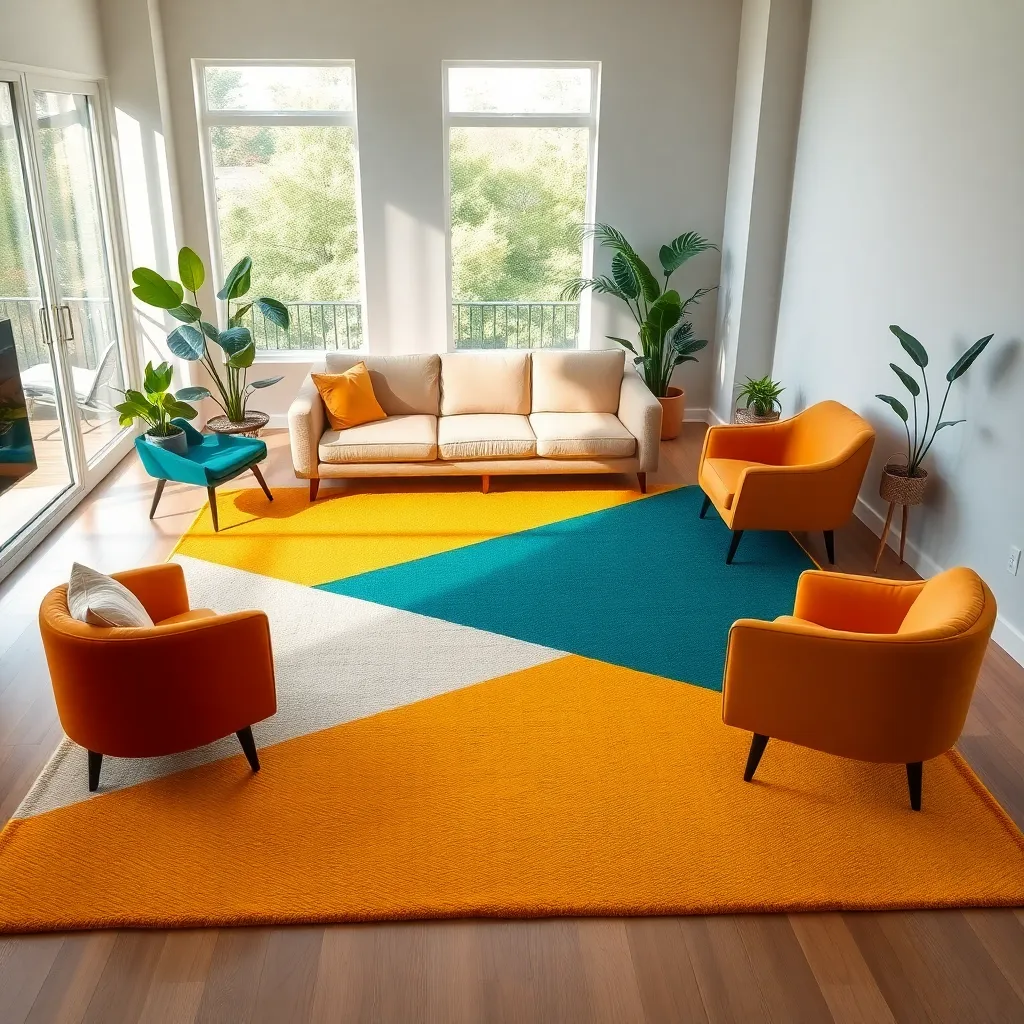
Rugs are a fantastic tool for color segmentation, allowing you to define different areas within your living room without the need for physical barriers. Choose a rug that complements your existing color palette, or use it as a base to introduce a new accent color, keeping the overall design cohesive.
In an open-plan layout, strategically placed rugs can help delineate spaces, such as separating the seating area from the dining space. Opt for a rug with bold patterns or contrasting colors to create a visual boundary that enhances the room’s flow while maintaining a sense of unity.
When selecting a rug, consider the size in relation to your furniture arrangement. The rug should be large enough to fit under all front legs of your seating pieces, ensuring the space feels grounded and unified. This approach not only segments areas but also creates a warm, inviting ambiance.
For those seeking a more advanced technique, layer multiple rugs to add depth and texture while further defining areas. Experiment with different materials, such as a large jute rug topped with a smaller, colorful wool rug, to create dynamic visual interest and a tactile experience.
Paint Accent Walls Strategically
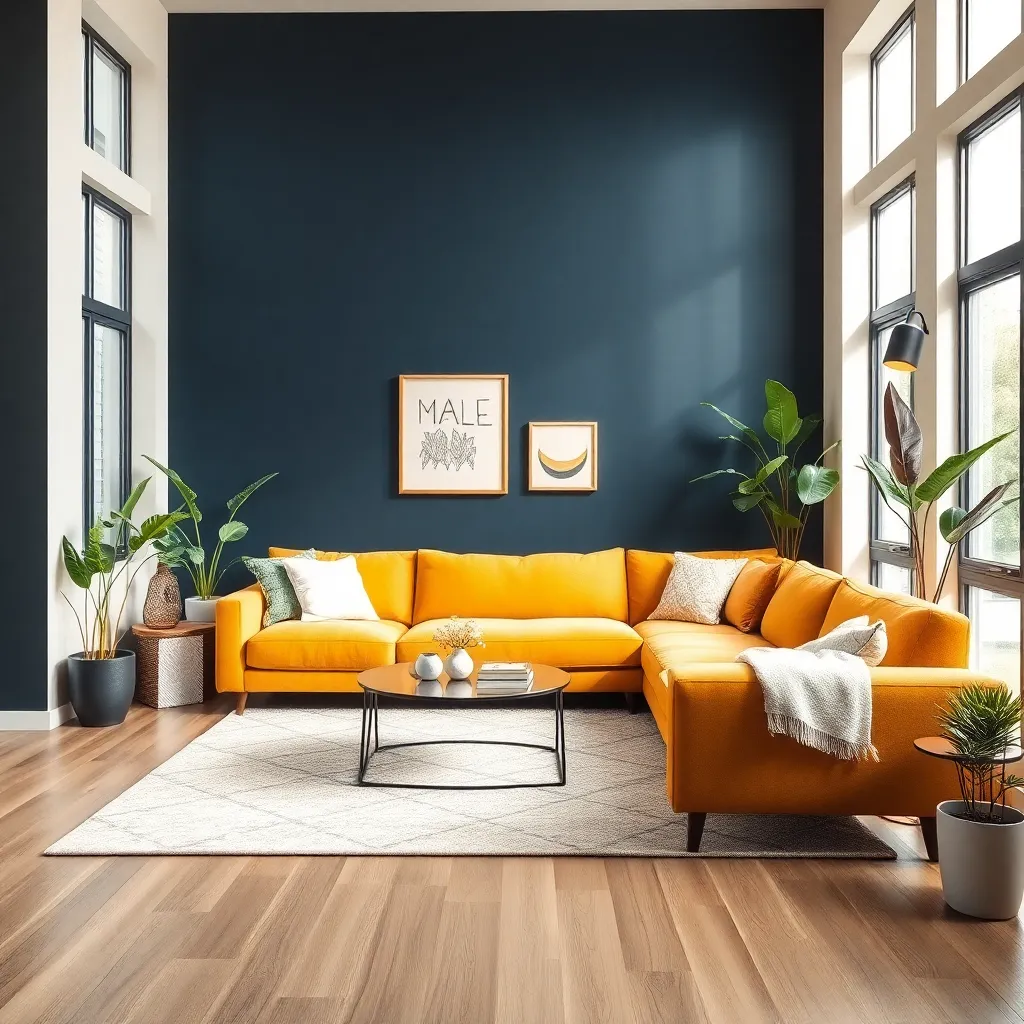
Transform your living space by strategically incorporating a paint accent wall that draws the eye and enhances architectural features. Choose a wall that naturally stands out, like one behind a sofa, fireplace, or a built-in bookshelf, to create a focal point in the room.
When selecting a color for your accent wall, consider using a shade that complements your existing decor but adds an element of surprise. For example, pair a soft neutral palette with a bold navy or emerald for a sophisticated contrast that maintains harmony.
Incorporate furniture and decor that tie in with your accent wall to create a cohesive and balanced look. Anchor the space with a statement piece, like a brightly colored sofa or a piece of art that echoes the accent wall’s hue, to unify the room’s design.
For those looking to experiment beyond solid colors, consider using patterns or textures, like a geometric design or a faux finish, to add depth and interest. This technique can elevate a simple accent wall into a striking design feature that showcases your personal style and creativity.
Incorporate Colorful Artwork
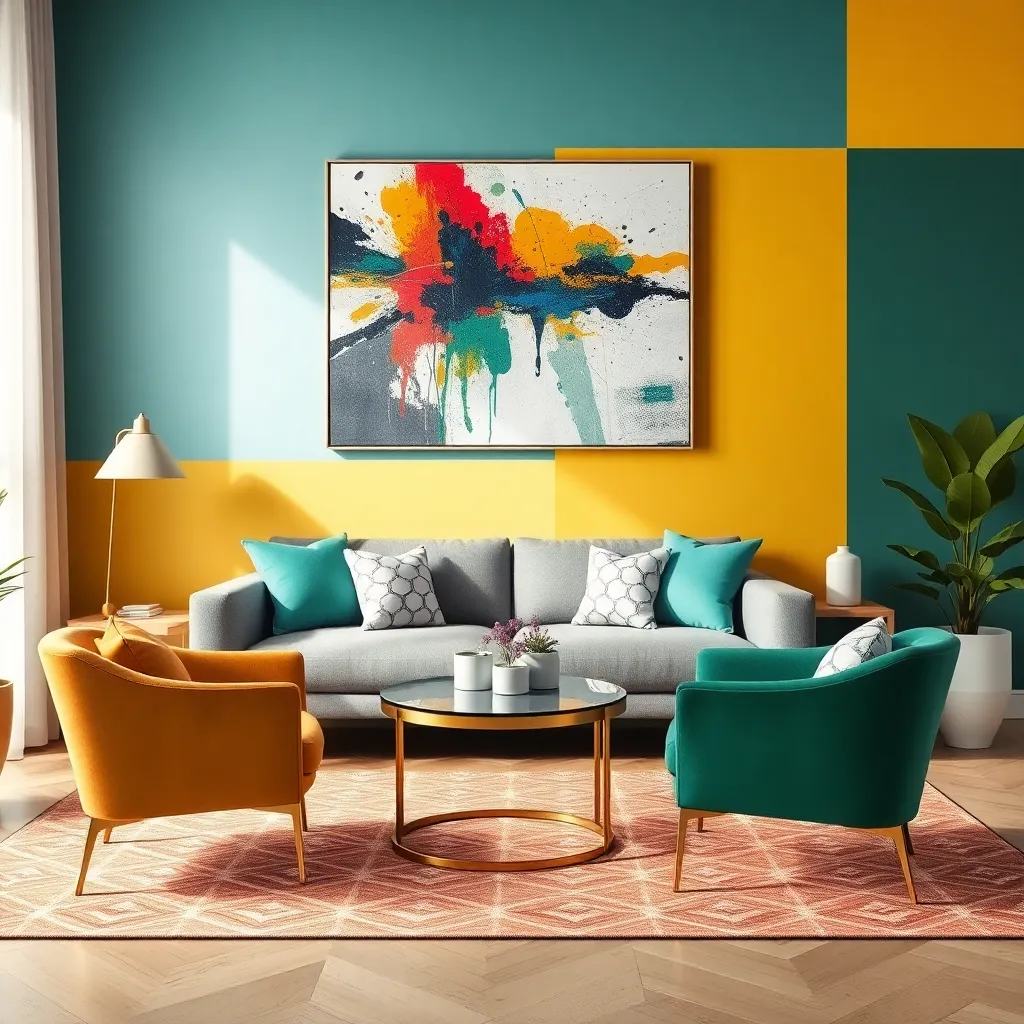
Adding colorful artwork is an excellent way to bring vibrancy and personality into your living room while maintaining an elegant look. Choose pieces that complement your existing color palette or introduce a bold, contrasting hue for a striking effect.
Consider the scale of the artwork in relation to your wall space and furniture. Large pieces work well above sofas or mantels, creating a focal point that draws the eye and anchors the room.
For a cohesive design, select frames that match or accentuate your existing decor elements, such as metallic finishes or wooden textures. Mix and match different frame styles for an eclectic touch, but keep them within a similar color range to maintain harmony.
Experiment with a gallery wall if you have a collection of smaller artworks. Arrange them in a grid pattern for a modern look, or opt for a more dynamic, asymmetrical layout to add visual interest and dimension.
Layer Textiles for Depth
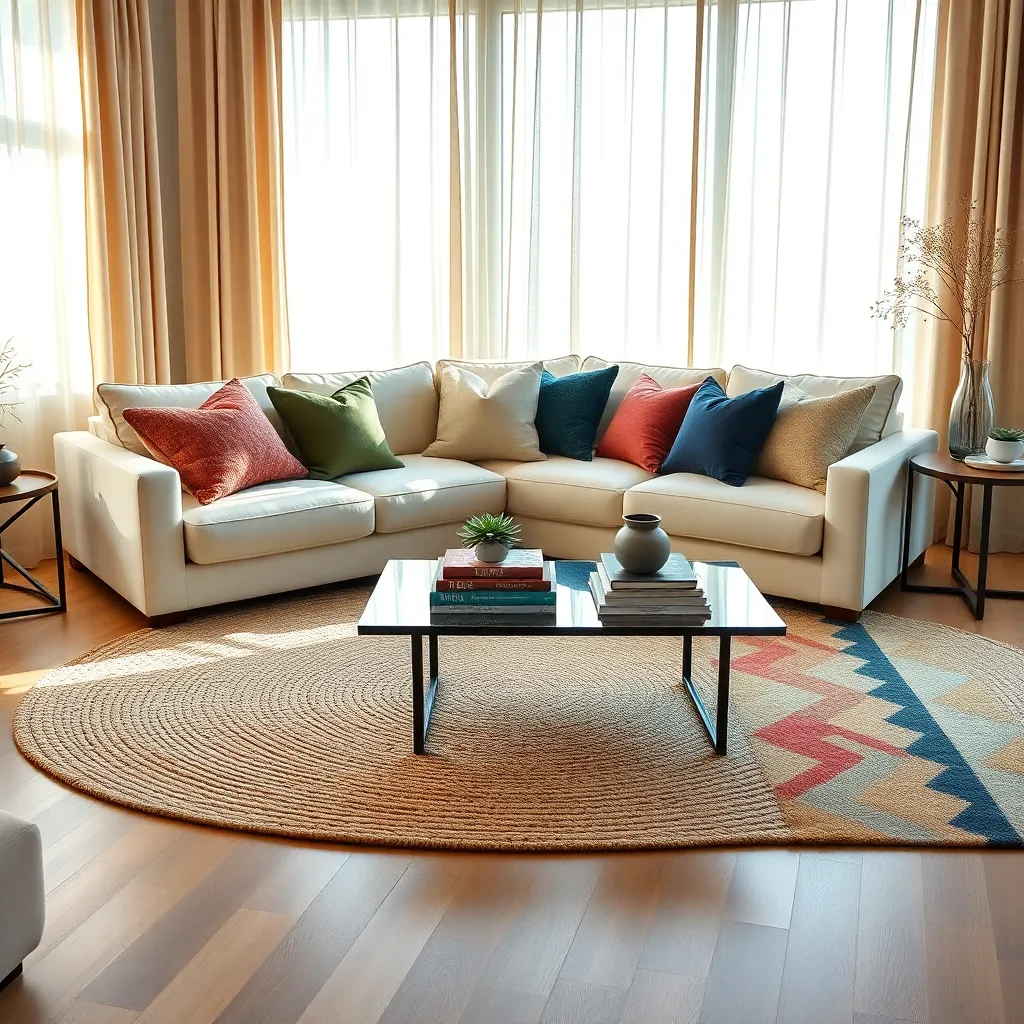
Layering textiles is a fantastic way to add depth and dimension to your living room. Begin with a foundational layer by selecting a neutral area rug that complements your existing color scheme, anchoring the room beautifully.
Next, add texture and warmth by draping a plush throw blanket over the back of your sofa. Choose a blanket in a bold color or pattern to create a striking contrast against the neutral backdrop, ensuring it pops without overwhelming the space.
Incorporate various cushions to enhance the tactile experience and visual interest. Mix and match pillow sizes, shapes, and fabrics, such as velvet, linen, and wool, focusing on a color palette that harmonizes with your artwork and other decor elements.
For an advanced touch, introduce layered window treatments that play with opacity and color. Combine sheer curtains with heavier drapes in a complementary or contrasting hue to control light while adding a sophisticated, layered look to your living space.
Highlight Architectural Features
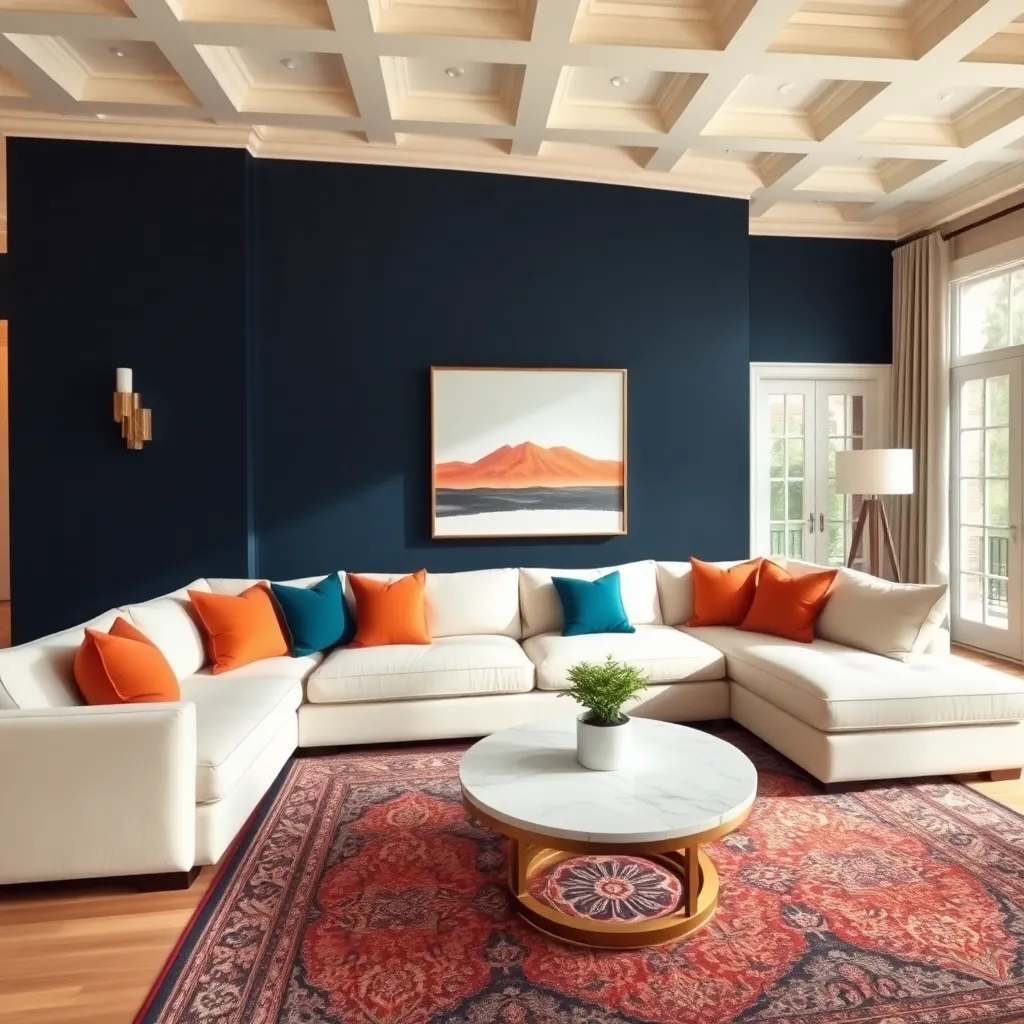
One way to elevate your living room is to highlight its architectural features through strategic color blocking. Begin by identifying key elements like fireplaces, moldings, or built-in shelves that can serve as focal points. Consider painting these features in a contrasting color to the rest of the room to make them stand out. For instance, if your walls are a soft neutral, a bold navy or deep emerald on the fireplace can add dramatic flair.
Additionally, you can use color to draw attention to ceiling details such as beams or medallions. Painting these elements a shade darker or lighter than the ceiling itself can create depth and interest. This technique works particularly well in rooms with high ceilings, where emphasizing vertical features can enhance the overall sense of space. It’s a simple yet effective way to add character to your living room.
When selecting colors, aim for harmonizing shades that complement the overall palette of the room. Opt for a monochromatic scheme if you prefer a subtle look, or go bold with complementary colors for a vibrant effect. To balance the colors, incorporate textiles and accessories in similar hues around the room. This ensures that the highlighted features feel integrated rather than isolated.
For those with an architectural arch or an alcove, consider accentuating these spaces with a pop of color or texture. Using a different paint finish, like matte against gloss, can also add dimension. Advanced decorators might even experiment with wallpaper within these areas to add pattern and personality. This approach not only draws attention to the architectural details but also adds a layer of sophistication to the decor.
Coordinate Furniture and Accessories
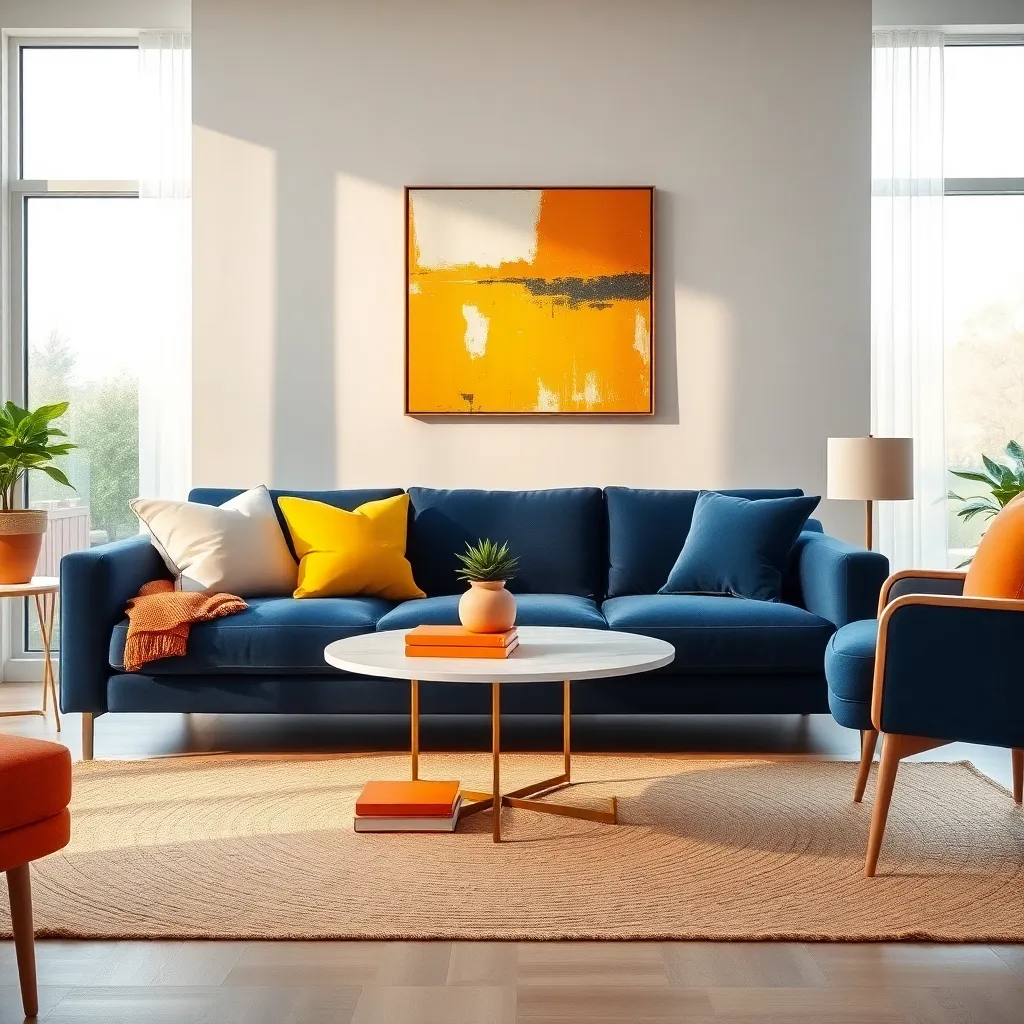
To create a cohesive look in your living room, begin by coordinating your furniture and accessories with the chosen color blocks. Choose a dominant color from your palette and use it for larger pieces like sofas or armchairs, ensuring they anchor the space effectively.
Next, incorporate accent colors through smaller furniture pieces or accessories like cushions, throws, or rugs. This approach allows you to infuse your living room with personality without overwhelming the color scheme.
Mixing materials is another effective way to enhance your color-blocking strategy. Pair a velvet sofa in a bold hue with wooden side tables or a glass coffee table to add texture and depth to the room.
For an advanced touch, consider layering different shades of the same color within your accessories. This technique creates a sophisticated gradient effect that adds visual interest while maintaining harmony within the space.
Play with Light and Dark Contrasts

Creating a dynamic living room involves playing with light and dark contrasts to add depth and visual interest. Start by choosing a dominant light color for the walls or large furniture pieces, such as a soft cream or pastel. This light backdrop will allow you to layer in darker elements strategically, adding a sense of sophistication.
Incorporate darker tones with accessories like throw pillows, rugs, or curtains to establish a striking contrast. For example, pair a light beige sofa with deep navy cushions or a charcoal gray rug. This technique not only emphasizes the contrast but also ties the room together, creating a cohesive look.
Varying the textures of these contrasting elements can further enhance the visual appeal of your living space. Use a combination of matte and glossy finishes to create depth; for instance, a matte black coffee table can be beautifully offset by glossy white vases. This interplay of textures ensures the room feels both elegant and engaging.
For advanced decorators, consider adding contrast through artwork or feature walls. A dark accent wall with lighter artwork or vice versa can serve as a focal point, drawing the eye and adding drama to the space. This method is particularly effective in modern and contemporary designs, where bold statements are welcome.
Add Greenery for Natural Balance
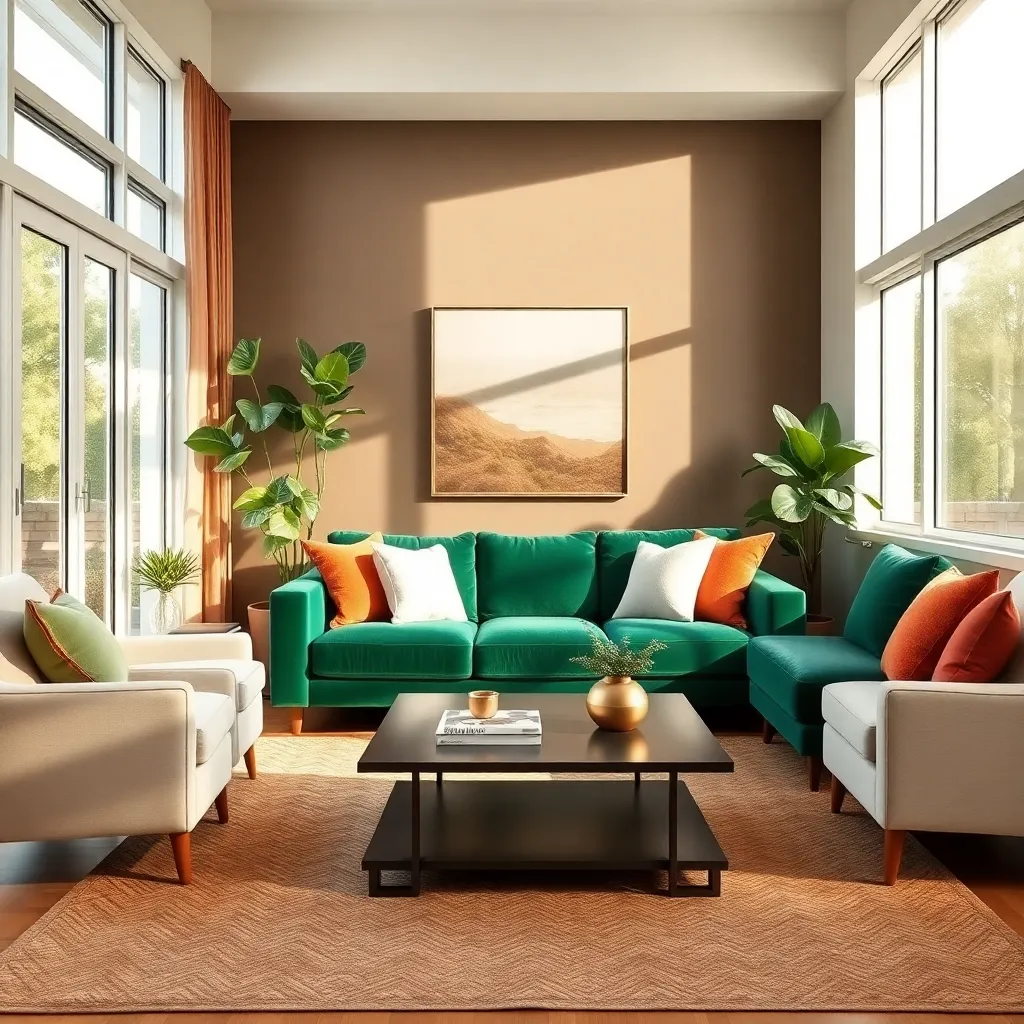
To infuse your living room with a sense of natural balance, integrating greenery is an excellent strategy. Start by selecting plants that complement your color-blocked spaces, using varieties like succulents or ferns for a low-maintenance approach that still offers lush visual impact.
Consider placing larger plants, such as fiddle leaf figs or rubber trees, in empty corners to help draw the eye upward and create a sense of height. Position these statement pieces near windows to ensure they thrive in natural light while enhancing your living room’s air quality.
For smaller touches, use trailing plants like pothos or string of pearls on shelves and mantels. This not only adds dynamic movement to your design but also softens the edges of hard furniture lines, creating a more inviting atmosphere.
Experiment with decorative planters that echo your room’s color scheme or contrast boldly against it. Ceramic pots with geometric patterns can echo the angles created by your color blocks, adding depth and cohesion to your space.
Utilize Color in Lighting Fixtures
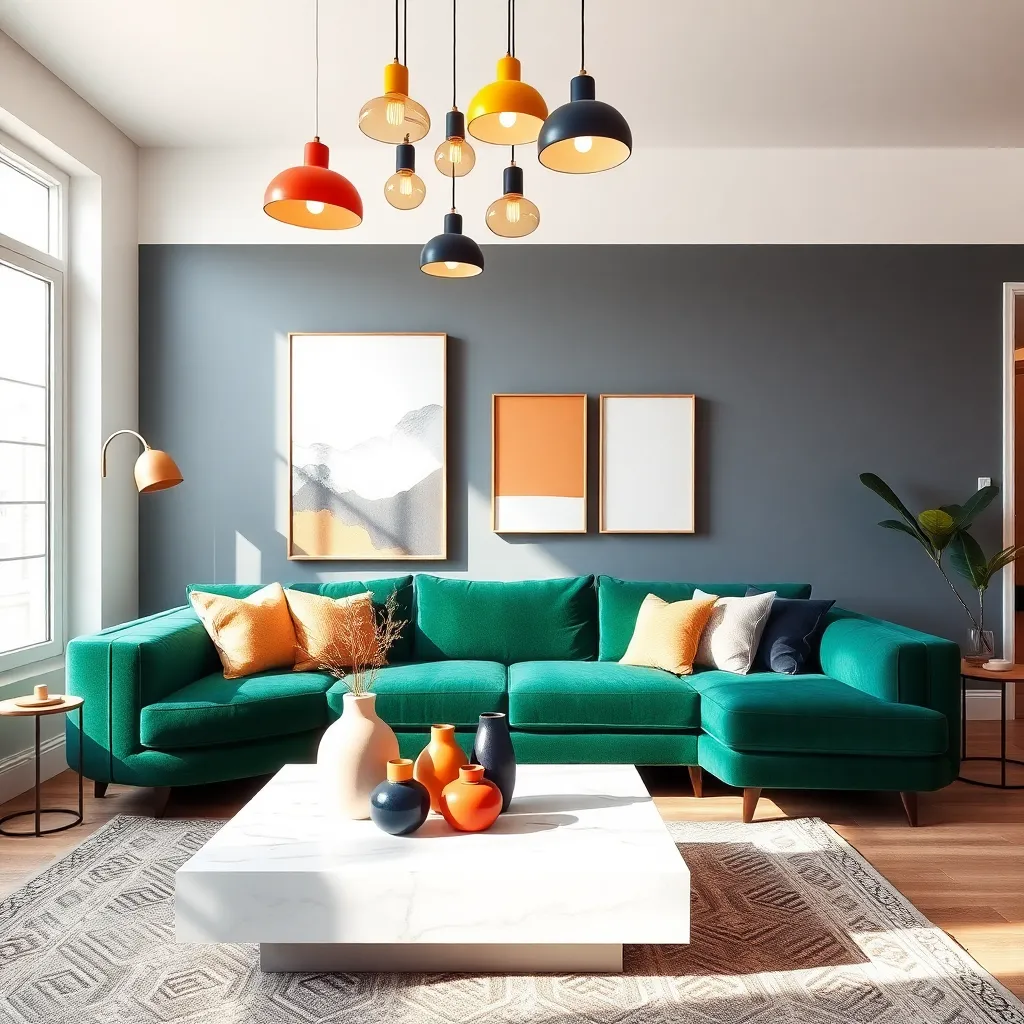
Integrating color into your lighting fixtures can dramatically transform the ambiance of your living room. Start by selecting fixtures in bold hues, such as a deep teal or vibrant coral, to create a striking focal point in the space.
To achieve a cohesive look, coordinate the color of your lighting fixtures with other room elements like throw pillows or artwork. Consider using pendant lights in complementary shades to add visual interest and depth to your overall color scheme.
For beginners, opt for colored lampshades or bulbs that can easily be changed to suit different moods or seasons. Advanced decorators might experiment with custom-painted fixtures or unique materials like colored glass to make a sophisticated statement.
Placement plays a crucial role in showcasing colored lighting fixtures effectively. Install fixtures at varying heights to create layers of light and shadow, enhancing the room’s visual dynamics and complementing your color-blocking efforts.
Define Spaces with Color Zones
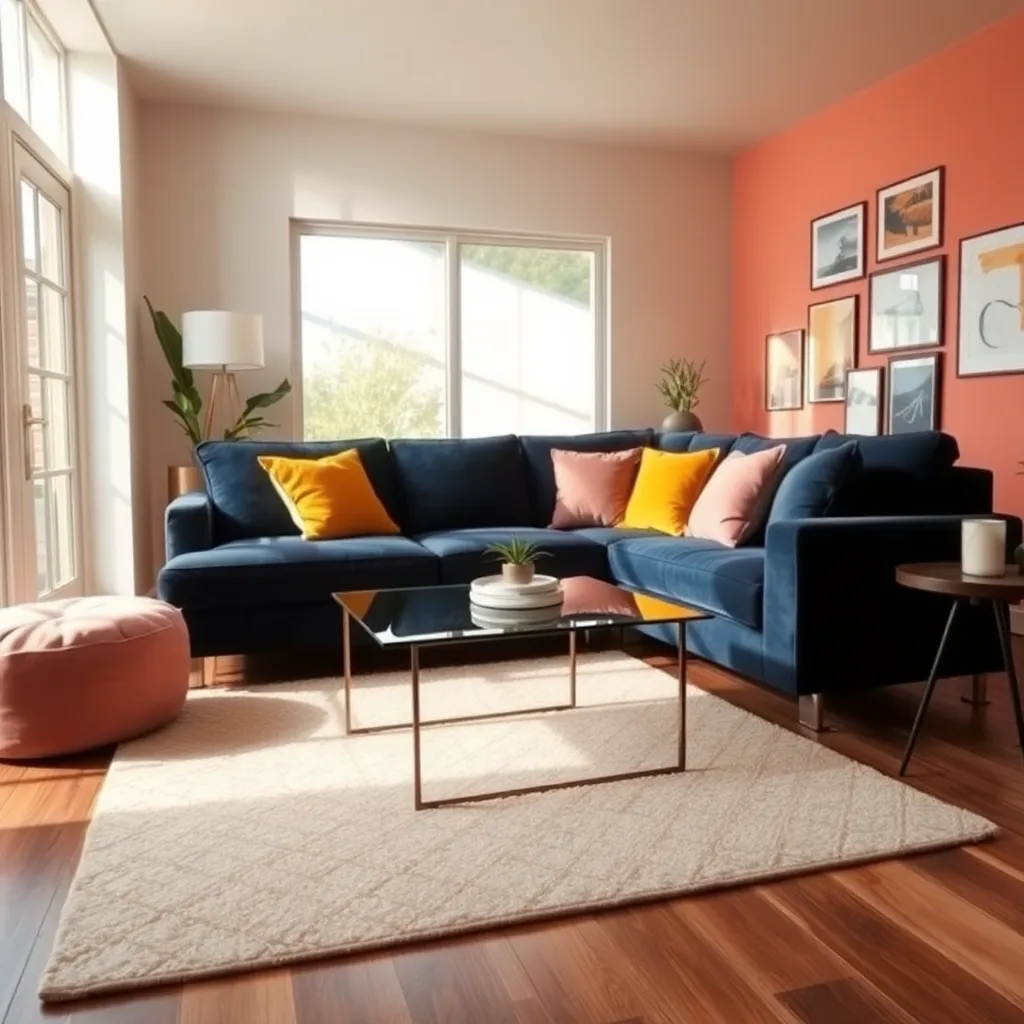
Color zoning is an innovative way to define different areas within a living room, making it feel more organized and visually intriguing. By using distinct color palettes for each zone, you can create functional spaces that cater to different activities such as reading, entertaining, or relaxing.
One effective technique is to use contrasting colors for adjacent zones to naturally differentiate them. For instance, you might choose a warm palette of reds and oranges for an entertainment area, while opting for cooler blues and greens in a reading nook to encourage a sense of calm.
Furniture placement plays a crucial role in this strategy. Position a vibrant-colored sofa to anchor a social zone, and use a contrasting or complementary wall color to heighten the effect. Similarly, a bold-colored rug can delineate a specific area, such as a dining space within an open-plan living room.
For advanced decorators, consider incorporating texture along with color to add depth and interest. Mix materials like velvet and leather in coordinating or contrasting shades to enhance the tactile experience of each zone. This approach not only enhances the visual separation but also makes each area feel uniquely inviting.
Mix Textures to Enhance Colors
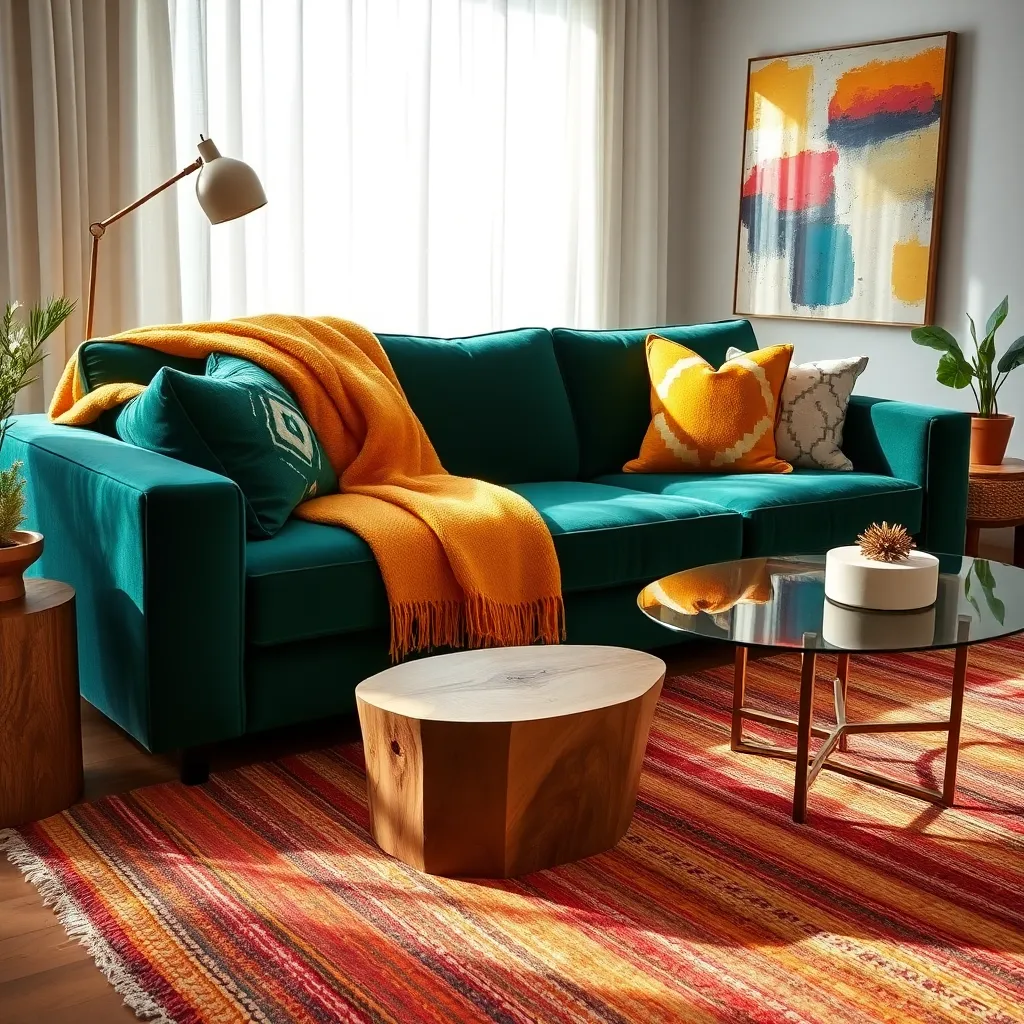
Textures play a crucial role in enhancing the colors within your living room, adding depth and interest. Begin by mixing different materials such as velvet, leather, and linen to create visual contrast that highlights your chosen color palette.
For a balanced look, pair soft textures like cotton or wool with more tactile materials like metal or wood. This contrast not only enriches the room’s visual appeal but also accentuates the hues, making them stand out more vividly.
Consider incorporating textured elements in your furnishings, such as a plush velvet sofa complemented by a sleek, wooden coffee table. This pairing not only emphasizes the colors of each piece but also adds layers of sophistication to your space.
Advanced decorators can experiment with layering textures through accessories like cushions, rugs, and throws. Opt for a mix of woven textiles and smooth finishes to create a dynamic interplay of textures that magnifies the room’s color scheme.
Conclusion: Growing Success with These Plants
In harnessing the transformative power of color blocking for your living room, we’ve explored 14 elegant tips that serve as a metaphor for nurturing vibrant relationships. From balancing contrasting hues to finding harmony in unexpected combinations, these concepts mirror essential relationship dynamics. We’ve discussed the importance of setting boundaries (tip 3), embracing change (tip 5), and the art of compromise (tip 8), all while allowing individuality to shine through (tip 11). Just as a well-color-blocked room creates a harmonious environment, so too can these principles foster a balanced and fulfilling relationship.
As an actionable next step, pick one color-blocking tip and discuss with your partner how it can metaphorically enhance your relationship. This could be a fun and enlightening exercise to deepen your connection.
Remember to bookmark this article as a handy reference guide. You never know when you might need a splash of inspiration to brighten up your relationship space.
By applying these colorful insights, you set the stage for a more vibrant and successful relationship future. Embrace these elegant strategies, and watch as your relationship becomes a masterpiece of love and connection.
